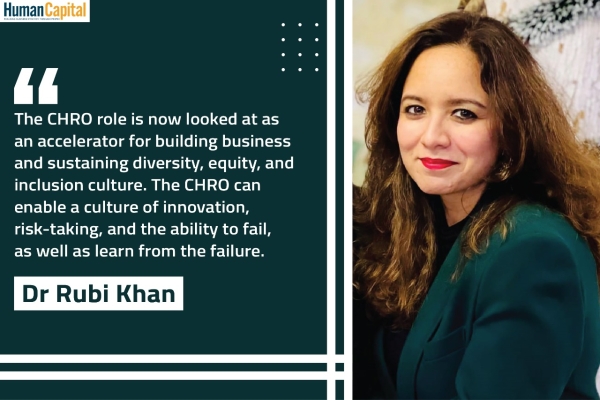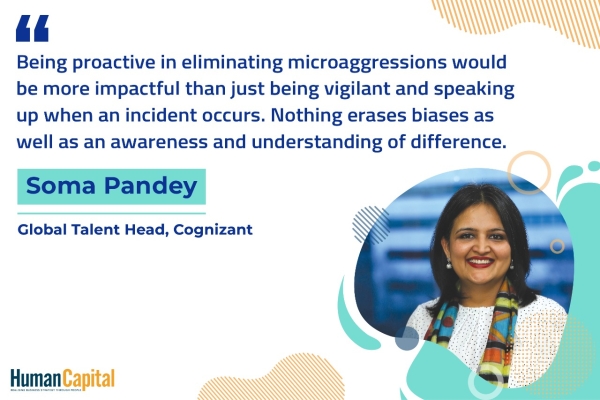Only a person who owns up to his decision, has conviction and is committed to take a call in the best interests of his organisation is worthy of the experience of agony in the decision making process.
How many of us in leadership positions have had this Shakespearean line reverberating in our heads as we face decision making dilemmas, which in the moment, assume ‘Hamletesque’ proportions? Leaders are expected to make decisions that affect a lot of people. This responsibility weighs heavily on many a shoulder. As humans, we are wired to make things predictable. All through our evolution and economic development, we have devised systems and processes, invented gadgets and technologies that have made our world more predictable. We carry this approach into our decision-making too. In order to make our decisions safer and logical- another way of interpreting predictable decisions – we rely on data, analysis and reason. We are conditioned through our formative years well into our adult life that data is infallible- I, too, believed in this. However, is this enough to make sound decisions? Is there something called a gut feeling that sometimes goads us in another direction? Is there something called intuition that plays an important role?
Reason or intuition?
When Ford was faced with falling demand and worker productivity along with high worker turnover, data and logic suggested a layoff to maintain profitability. Henry Ford, defying the advice of his analysts and consultants, chose to double the wages of workers. Ford’s productivity doubled, worker turnover dropped to a fraction. There was also a spur in the demand since it forced a wage increase in a large portion of the American labour force, thereby, making them a significant customer segment for cars. Warren Buffet, early in his career, took a decision to buy a majority stake in Berkshire Hathaway on a hunch that the stock would continue to appreciate (and also to make a personal point to the CEO of Berkshire) in spite of data and past experience telling otherwise. In the end, it turned out to be a disaster as Buffet had to pour in millions to make it work – which finally it did not.
These were examples of one leader who went against data and reason to take a decision led by his intuition and was successful, while at the same time, the other made a decision that went awry. So, how do we know what is right, when do we choose gut over data or do we squash that funny feeling in our stomach and stick to what cold reason tells us? This is a question that has been the subject of several books, articles and research papers. I share my personal experiences here.
Before we answer this question, we must make a bold assumption. The person who is faced with this dilemma is someone who has his ‘skin in the game’. Only a person who owns up to his decision, has the courage of conviction and is committed to take a call in the best interests of his organisation or team can really qualify as someone who is worthy of the experience of agony in the decision making process. Someone who is riskaverse would always take a decision supported by data, irrespective of his gut feeling with a view that at least no one can blame him for flying in the face of reason for a failed decision later on.
Acting with Intelligence
J Krishnamurthy, one of the most powerful thinkers of our times, guides us to lead a life of intelligence. He makes a distinction between intelligence and intellect. To quote him, “Intellect is merely thought functioning independently of emotion. Intelligence comes into being when one acts in perfect harmony both intellectually and emotionally. Intelligence comes with sensitivity and observation.” Leaders have to act and decide with intelligence.
Intellect deals with reason – data, logic and information. Leaders are trained to use this part of their awareness – our entire educational system is based on developing our intellect. We measure IQ which is a measure of intellect. It is pertinent to point out here that even when analysing cold factual information, we can fall prey to biases – confirmation bias, anchoring bias and the bandwagon effect being the most common biases. Biases – and there are several – are wired into our brains as default behaviour and one has to be aware of one’s “special” bias as all of us have our favourites.
The important part where most of us struggle is – emotions. We are taught to believe that emotions or feelings have little place in the cold, detached world of business. Nothing could be further from the truth. There is a whole body of research that says that most (some people say ALL) decisions are first made on an emotional level and then data is used to substantiate the decision. We need to be able to access our feelings to understand our intuition – it is no coincidence that we use the word ‘gut feeling’ as a synonym for intuition. How do we access this gut feel?
1. By accessing our emotions when we are about to make an important decision. How are we feeling about this decision? Does it sit right?
2. What conditioning is driving this emotion? Is this drive appropriate in these circumstances? Need that drives this emotion? This can only happen through a .rigorous, dispassionate and relentless process of self
3. Do we trust our conclusions around our emotions? This can only be built by taking the first step and trusting it. One cannot learn to swim by not jumping in the pool.
Unbiased analysis is the key
The best decisions are those that are taken when an unbiased analysis of data supports our intuition. The process of decision making that I follow when faced with an important decision with insufficient or unreliable information is:
1. First look at the situation and decide intuitively. This I would do without analysing a lot of data.
2. Access my emotions to understand why I chose the option that I did. What emotions drove this choice? Were they appropriate in the current situation? If not, then what would I choose if I now am aware of these emotions. This step typically helps me identify the effect of any biases or conditioning.
3. Having now processed my emotions, I would then look at data dispassionately and try and disprove my earlier choice. This way, I remove confirmation bias from the equation.
One cannot end a discussion on this topic without referring to Daniel Kahneman in his book, ‘Thinking Fast, Thinking Slow’. One can fall prey to the temptation of always “going with the gut” as our brain is an inherently lazy organ and wants to avoid cognitive load. Hence, it is imperative that we let this brain game play out and discipline our brain to look at and analyse data before we decide the best course of action ahead.
(1)(1).png)
Do you look forward to permanently working from home after the pandemic subsides?
Trending
-
SBI General Insurance Launches Digital Health Campaign
-
CredR Rolls Out 'Life Happens' Leave For Its Employees
-
Meesho Announces 30-Week Gender-Neutral Parental Leave Policy
-
Microsoft Unveils Tech Resilience Curriculum To Foster An Inclusive Future
-
60% Indian Professionals Looking For Job Change Due To COVID: Survey
-
SpringPeople And Siemens Collaborate For Digital Transformation Push
-
86% Professionals Believe Hybrid Work Is Essential For Work Life Balance: Report
-
Almost 1 In Every 3 People's Personal Life Affected Due To Work Stress
-
Meesho Rolls Out Reset And Recharge Policy For Employees
-
80% Of Talent Leaders & Academics Say Pandemic Changed Skill Needs For Youth: Report
-
Hero Electric Rolls Out 'Hero Care' Program For Employees
-
Human Capital In Collaboration With ASSOCHAM Hosts Virtual Conference
-
IKEA India, Tata STRIVE Collaborate To Create Employability And Entrepreneurship Opportunities
-
SAP India, Microsoft Launch Tech Skilling Program for Young Women
-
DXC Technology, NASSCOM Collaborate For Employability Skills Program
-
Lenskart To Hire Over 2000 Employees Across India By 2022
-
Mindtree Launches Learn-and-Earn Program
-
Tata AIA Extends 'Raksha Ka Teeka' To Its Employees
-
Swadesh Behera Is The New CPO Of Titan
-
NetConnect Global Plans To Recruit 5000 Tech Professionals In India
-
Hubhopper Plans To Hire 60% Of Indian Podcasters By 2022
-
Corporate India Needs More Women In Leadership Roles: Report
-
Aon to Invest $30 Million and Create 10,000 Apprenticeships by 2030
-
Tech Mahindra Launches ‘Gift a Career’ Initiative for Upskilling of Youth
-
40% Women Prefer Flexible Working Options in Post-COVID World: Survey
-
3 out of 4 companies believe they can effectively hire employees virtually: Report
-
Vodafone , CGI and NASSCOM Foundation launch digital skills platform
-
Odisha: Bank, postal employees to deliver cash for elderly, differently-abled persons
-
Skill India launches AI-based digital platform for "Skilled Workforce"
-
Hiring activity declines 6.73% in first quarter: Survey
-
70% startups impacted by COVID-19 pandemic
-
Bajaj Allianz Life ropes in Santanu Banerjee as CHRO
-
Over 70 Percent MSMEs look at cutting jobs to sustain businesses
-
93 Per Cent employees stressed about returning to office post-lockdown
-
Johnson & Johnson India announces family benefits for same gender partners
-
Indian firms turning friendly towards working mothers
-
Welspun India names Rajendra Mehta as new CHRO
-
Wipro partners with NASSCOM to launch Future Skills platform



Human Capital is niche media organisation for HR and Corporate. Our aim is to create an outstanding user experience for all our clients, readers, employers and employees through inspiring, industry-leading content pieces in the form of case studies, analysis, expert reports, authored articles and blogs. We cover topics such as talent acquisition, learning and development, diversity and inclusion, leadership, compensation, recruitment and many more.
Subscribe Now












































Comment